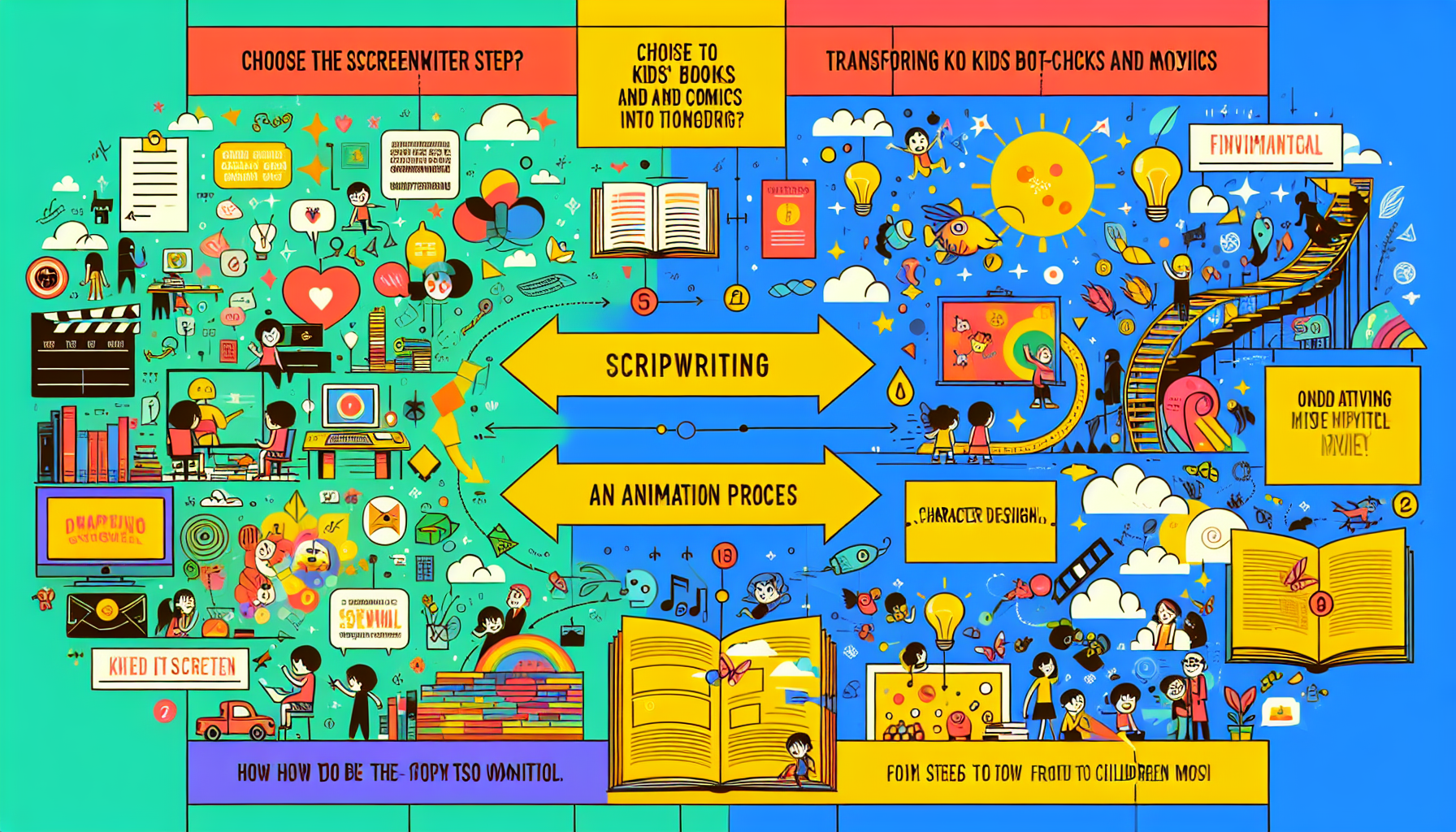
Turning Kids’ Books and Comics into Animated Movies: A Screenwriter’s Guide
Adapting children’s literature and comics into animated films is a creative journey that blends imagination with careful consideration of the original material. Whether the source is a bewitching picture book or a series of dynamic comics, the transformation into an animated movie involves several critical steps. A screenwriter’s role in this process is pivotal, requiring a harmonious balance between being true to the original work and breathing new life into the story through animation.
Understanding the Source Material
The first step in the adaptation process is a deep dive into the source material. This means more than just reading the book or comic; it involves understanding the essence of the story, its themes, characters, and the world it inhabits. For a screenwriter, appreciating the subtle nuances and the reasons behind the material’s appeal to its audience is crucial. It is also essential to recognize what elements make the story unique and engaging, as these will need to be preserved and emphasized in the animated adaptation.
Expanding the Narrative for Film
Children’s books and comics often tell a story in a concise manner, which can be a challenge when adapting them into a full-length film. Screenwriters must explore ways to expand the narrative without diluting its essence. This might involve delving deeper into the characters’ backgrounds, introducing new characters, or elaborating on the story’s setting. The expansion should feel organic and still in keeping with the tone and style of the original work.
Visual Translation
An integral part of adapting kids’ books and comics into animated movies is the translation of the visual style. Animation offers limitless possibilities, but finding a visual language that aligns with the original material is key. For a screenwriter, understanding the importance of visual storytelling goes hand in hand with traditional narrative crafting. Working closely with animators and directors, screenwriters help guide the visual direction to ensure it complements the storytelling.
The Dialogue and Humor
Children’s books and comics often have a unique voice, filled with humor and wit that resonates with their audience. Capturing this voice in the screenplay is vital. The dialogue must feel authentic to the characters and the world they inhabit, while also being accessible and engaging for the film’s audience. Humor, especially, can be a tricky element to adapt, as what works in print may not always translate directly to screen. Screenwriters must creatively adapt the humor to suit the new medium.
Working with Themes and Messages
Many children’s books and comics carry important themes and messages, from the value of friendship and courage to more subtle social commentaries. A screenwriter’s task is to weave these themes into the film’s fabric in a way that feels natural and impactful. It’s essential to strike a balance where the message is clear without being overly didactic, allowing the audience to engage with the story on multiple levels.
Conclusion
Adapting kids’ books and comics into animated movies is a rewarding challenge that allows screenwriters to blend the rich traditions of storytelling with the vibrant possibilities of animation. By respecting the original material while daring to explore new creative dimensions, screenwriters can craft films that captivate and enchant audiences of all ages. The journey from page to screen is filled with opportunities to inspire, entertain, and perhaps most importantly, to reimagine beloved stories for a new generation.






